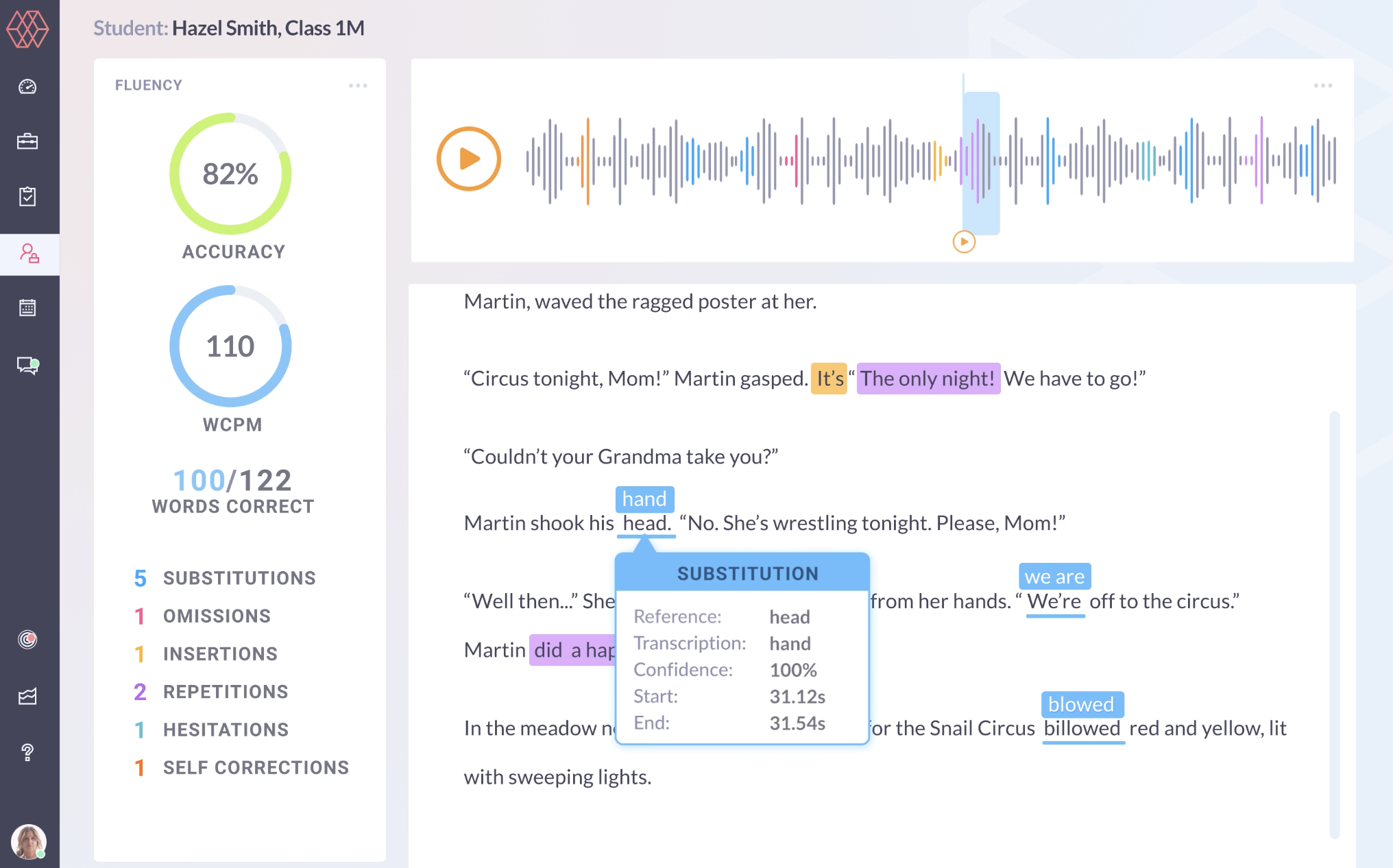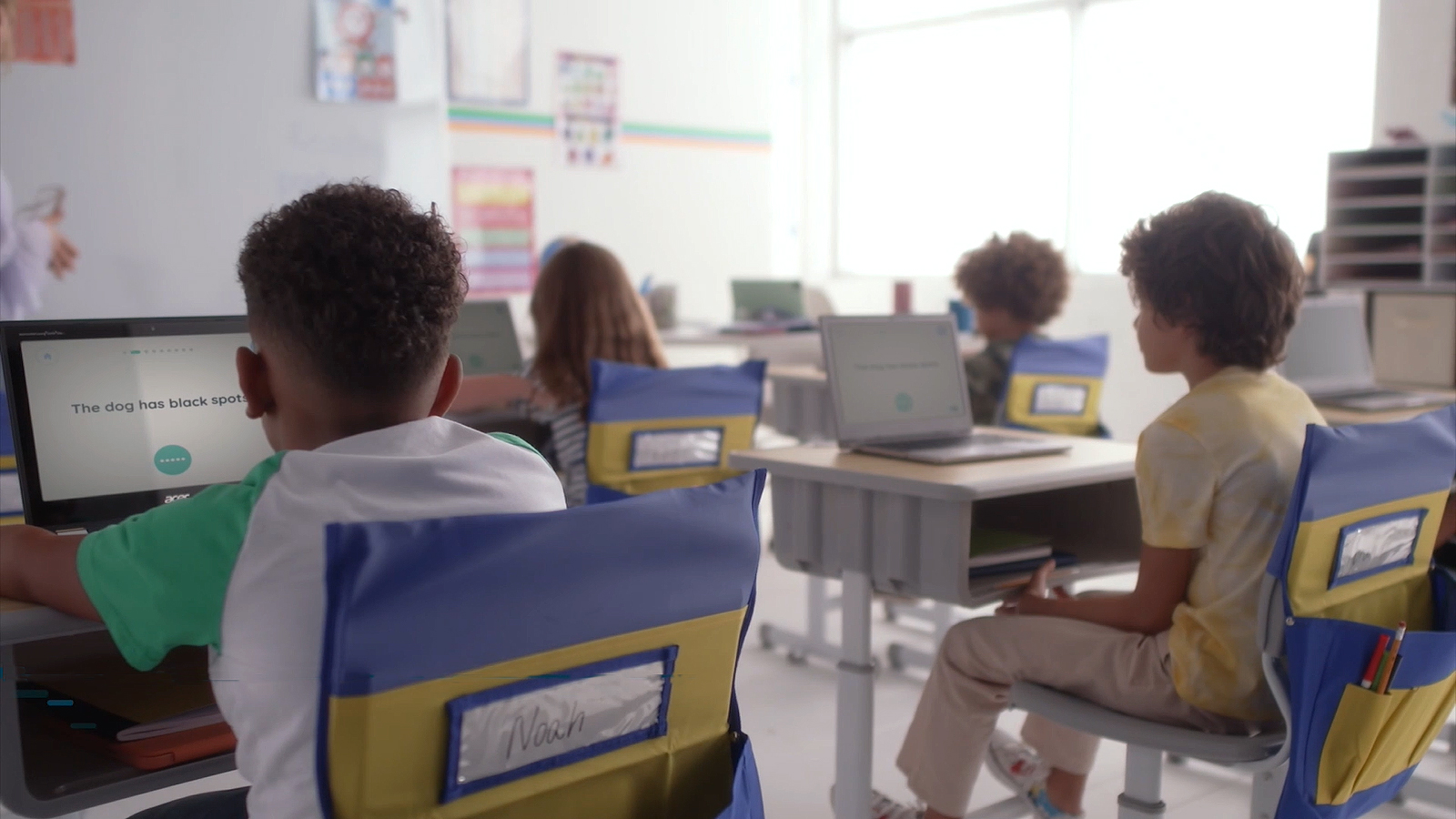How voice AI can transform your preK-12 literacy products
April 22, 2024

It’s no secret that there’s a literacy crisis in America, and that effective, scalable solutions are needed to help all kids learn to read.
About one in three children across the US aren’t reading on grade level, while half of students in grades three to eight in New York City are failing reading tests. This is so concerning that New York — the largest school system in the US — is overhauling its reading curriculum.
Educators are optimistic that adding AI to adaptive reading tools can fill important literacy gaps. In particular, many school districts are evaluating how voice AI technology — also known as automatic speech recognition (ASR) or, simply, voice technology — can support literacy education for their teachers and students.
Voice-enabled reading tools automatically listen while a child is reading aloud, analyze the audio, and deliver immediate rich and granular feedback to the teacher dashboard and/or to the child directly.
This blog has been adapted from our recent webinar “5 Ways Voice-Enabled Literacy Tools Empower K-3 Teachers and Students” with our partner Learning Without Tears. In it, we explore three ways voice AI can transform preK-12 literacy products, paving the way for more impactful and personalized literacy learning experiences for kids and their teachers.
3 benefits of voice AI in reading tools
1. More time for targeted instruction
Data from oral reading fluency assessments is essential for planning instruction, grouping students, and making necessary instructional adjustments throughout the year. One-on-one teacher-led assessments are time consuming, however, easily taking five minutes or more per student.
Voice-enabled reading tools can assess students automatically, frequently, and at scale, giving teachers the pinpointed and timely data they need to guide instruction at the student, group, or classroom level.
Actionable data for teachers
With voice-enabled oral reading tools, feedback on a child’s reading progress is delivered directly to a teacher’s dashboard, offering accurate and deep insights into student capabilities. The voice data returned to teachers can include:
- Reading accuracy and rate scores (e.g., words correct per minute)
- Reading errors (e.g., insertions, deletions, pauses, and hesitations)
- Prosody (students’ expression while reading)
Access to continuous data on each student’s progress also allows teachers to identify difficulties earlier and meet children where they’re at in terms of stretch or scaffolding tasks.
Immediate and longitudinal data delivered to teacher dashboards can help them identify a child who is struggling earlier in their literacy journey and prompt more personalized intervention and more focused screening.

2. Unbiased assessment data
Equity in learning experiences is fundamental for all kids, no matter their age, background, or academic ability. But teachers are also human, and subjective assessments of a child’s abilities happen, for reasons within and outside of their control.
In the busy environment of a noisy, energetic, and diverse classroom, teachers can also unwittingly make mistakes during assessments.
It’s also true that, for some kids, even the presence of a teacher can negatively affect their assessment performance. Many children feel anxious during assessments when they see their teacher making notes as they read out loud.
With voice-enabled reading tools, assessments are automated and can happen more regularly and invisibly for students and educators. And as discussed above, the data teachers receive, immediately and longitudinally, can help them objectively view the next steps to take to support a child in their reading journey.
Voice-enabled learning tools provide unbiased data back to teachers, giving them a true record and measure of students’ independent performance and stage of learning.
3. Empowering students
To facilitate meaningful literacy practice, children need to engage with both physical and digital texts. This helps them feel empowered, see that they’re making progress, and build their confidence.
One way to make reading practice more enjoyable and fun for children is by incorporating elements of fun and play into the learning process. Voice-enabled learning tools can offer more immersive experiences to kids in gamified activities. Voice-powered tools can also allow younger students to play back their own voices (which they love!), giving them agency over their learning, increasing their motivation and engagement.
Voice-enabled literacy programs also break down barriers for students who feel anxious when reading out loud in front of their peers by allowing them to practice reading independently at their own pace, in the classroom or at home.
As students hear themselves mastering reading skill after reading skill when they read aloud, they become more confident to read in front of their teachers and peers, and that confidence paves the way for accelerating their academic achievement.

Teachers receive immediate feedback on each child’s reading — at the word and phoneme level — on their teacher dashboard. They can see how the student performed with their target skill words, cumulative review words, high-frequency words, and their automaticity.
This oral reading data can also empower and improve the communication with families and caregivers, as it allows teachers to provide even deeper insight into how students are reading in the classroom.
SoapBox has invested the last 10 years into developing our specialist voice AI technology so that it’s accurate, equitable, and reliable for young students’ voices and speech patterns.
Our voice technology is built using state-of-the-art deep learning techniques and neural networks to ensure the highest accuracy for analyzing kids’ unique and variable speech.




